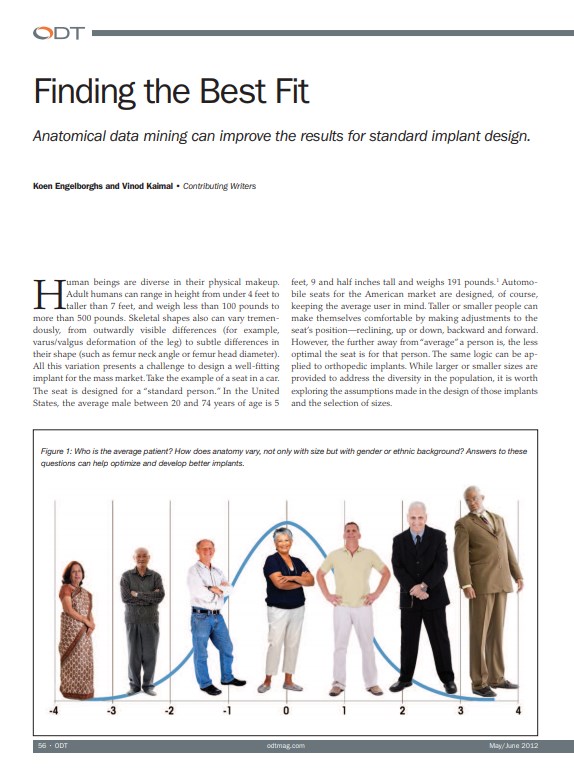WHITEPAPER
Finding the Best Fit – Anatomical data mining can improve the results for standard implant design.

While custom or semi-custom implants are now possible with craniomaxillofacial cases, extreme hip replacements and surgical instrumentation, most other orthopedic implants, such as knee or hip reconstructions, plates, nails, etc., still use standard, off-the-shelf implants. Implant designers, therefore, provide various sizes of implants based on some key measurements taken from the literature or a limited sampling of patient data.
The different implant sizes often are scaled versions of the average implant, although, in reality, the shape of anatomy changes as a function of the size of the patient. In other words, the average small person is not just a scaled version of the average large person.
In the case of knee implants, for example, the sizing of the implant commonly is determined entirely based on a single measurement—the antero-posterior (AP) dimension, with all other dimensions simply scaling with the AP measurement.
This content is intended for Health Care Professionals only.
